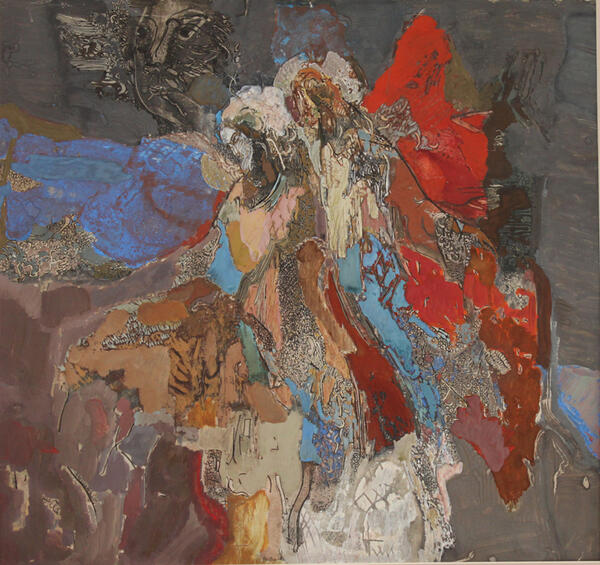Vladislav Mikhailovich Grachyov (1937–2015) was born in Kostroma. While studying at the Kostroma Art College (1954–1958), he developed an understanding that the concept of art as a form of imitation of life was outdated.
As if picking up the ideas that were expressed at the beginning of the 20th century by representatives of the Russian avant-garde, Vladislav Grachyov worked on developing the pictorial potential of color, line, and texture, looking for his own unique language in art that could convey his personal worldview.
The graphic arts were the closest to his artistic temperament. They became the main avenue for his creative thinking and cognition of the visible. They were a means of forming space, creating an image and a mood. The artist’s mastery of the line was combined with his talent as a colorist-improviser.
The artist built exquisite color harmonies and rhythms in a free, relaxed manner. He used fluid gouache paints and mixed them to achieve the most unexpected combinations. One of the most significant chapters in his work was the series “Destruction of the Cultural Layer. Frescoes”. He worked on it from 1985 to 1997.
The series was based on the philosophical idea of understanding spiritual traditions and the importance of ancient Russian aesthetics. “Destruction” in this context can mean both the loss of spiritual values, and the destruction of old Russian figurative imagery, which, losing its former structure, gives life to a new, abstract one, based on the same harmony and sonority of color, smoothness and elegance of lines. In this series, the artist included fragments of frescoes deteriorating over time and collapsing, which he observed in many churches.
The museum’s exhibition presents a work from this series — “Boris and Gleb”. Vladislav Grachyov created it in the mid-1990s. He depicted stylized figures of Saints Boris and Gleb in a space organized by color spots: they seem to have slipped from the flaming, vibrant robes of the saints.
Vladislav Grachyov belonged to those artists who
were endowed by nature with the gift of feeling the impulses of their time, for
whom the search for new forms in art was the only possible way of being an artist.



